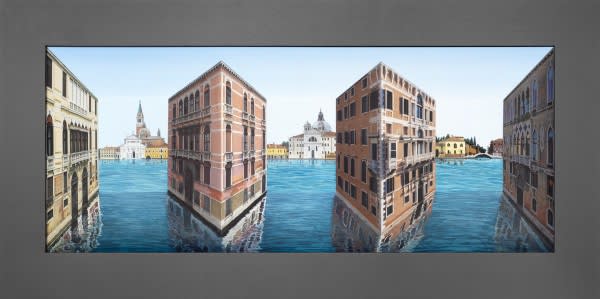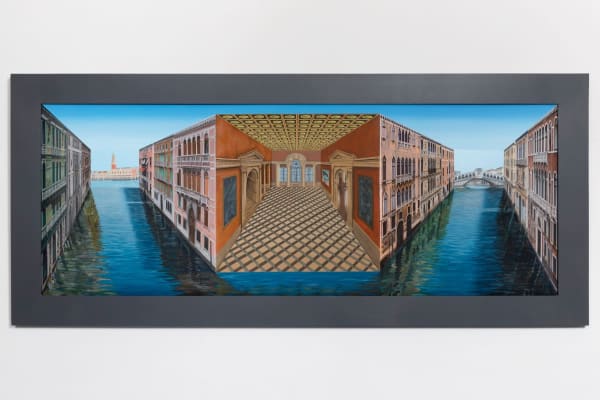Patrick Hughes British, b. 1939
Patrick Hughes' paintings show that he is a master of optical and visual illusion and that he expands the boundaries of artistic perception. In 1961, Hughes was selected for his first solo show in Mayfair, London. It was the first one-man show by a Pop Artist, though they were not even called that then. In 1964, Hughes created two seminal works in reverse perspective – the innovative technique invented by the artist. Infinity and Sticking-out Room would remain in his mind and eventually inform 50 years of his
artistic career. Throughout the 70’s and into the 80’s Hughes hung his investigations of perception and illusion on the motif of the rainbow. Enjoyed for their joyful, colorful and simple presentation, Hughes transformed an ephemeral, momentary happening - the rainbow - and represented it as a solid experience with personality. His name would become synonymous with and internationally recognized for the engaging and somewhat Surrealist rainbow paintings and print works.
In the late 1980s Hughes revisited exploiting the difference between perspective and reverspective and solidifying space. These works, depicting architectural elements, grand cityscapes, and even imagined exhibitions of famous artworks, are constructed of wooden pyramids in perspective but the wrong way around, with the furthest point of the space represented being closest to the viewer. The resulting
illusion is extraordinary, the viewer relates to the painting as it seems to move seamlessly, giving an impression of being in the room or outside the architecture depicted. The experience of seeing a PatrickHughes sculptured painting in reality is really to experience unreality and the paradox of illusory space
and movement.
Hughes’ 3-D reverspective paintings are actively in demand in by both private and public collectors and exhibited around the globe. He has been featured in more than 150 solo exhibitions throughout Europe and the US and honored with works added to numerous prestigious museum collections including the Tate Gallery, The British Library, and The Victoria and Albert Museum (all in London); The Museum of Fine Arts, Boston; The Detroit Institute of Art, MI; the Gallery of Modern Art, Glasgow, Scotland; The
Würth Museum, Künzelsau, Germany; and the Baker Museum, Florida.










